Table of Contents
Mobile app development is trending like nothing else. Based on that, it’s high time to discuss app monetization.
It goes without saying the main goal of starting a business or creating an app is to make money. But how do you make money from a mobile app?
Well, the answer is easy enough for service and product-based businesses. However, did you know, even if you don’t fall into that category, you can still monetize the app?
That’s true and it is one of the methods companies like Instagram, Pinterest, Amazon, and others use to generate millions in profit.
So, if you are someone who wants to make money with their mobile app, this blog is for you. Here, we shall be discussing all you need to know about app monetization including strategies, processes, and more.
Therefore, with this being said, let’s get right into it:
What is Mobile App Monetization?
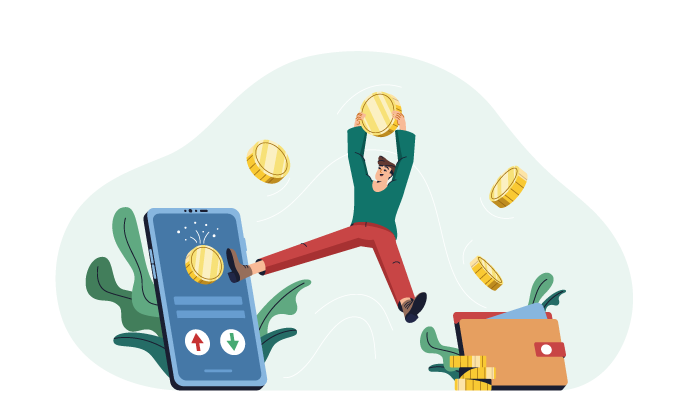
What is mobile app monetization?
The term “Mobile app monetization” refers to the process of generating revenue from a mobile application.
It involves implementing strategies and techniques to earn money from the app, which can help cover development costs, support ongoing maintenance, and generate profits for the app’s creators or owners.
As such, mobile monetization is one of the most important parts of mobile app development. Let’s see “why” in the next section of the blog
Why Monetize Your App?

So why should you monetize your app?
There are various reasons to do so. Let’s discuss the importance of app monetization in this blog. They are, as mentioned below:
Revenue Generation
It goes without saying that app developers invest time, effort, and resources into creating and maintaining their apps.
And app Monetization allows them to generate revenue and sustain their business.
It covers development costs, ongoing maintenance, server expenses, and marketing efforts, and can lead to profitability.
Sustainable Growth
Monetization provides the financial resources necessary for businesses to continue improving and expanding their apps.
It enables them to invest in new features, updates, user support, and marketing activities, which ultimately leads to a better user experience and attracts more users.
Incentive for Innovation
App monetization incentivizes businesses to create innovative and high-quality apps.
By providing financial rewards, the business is motivated to invest in research and development, explore new technologies, and deliver unique and valuable experiences to users.
User Support and Maintenance
Developing an app isn’t enough, what you need to do is maintain and support the app for it to be successful. Monetization ensures that Businesses can provide ongoing support and maintenance for their apps.
This includes fixing bugs, addressing user feedback, providing regular updates, and ensuring compatibility with new device versions and operating systems.
Quality Content and Services
App Monetization models like subscriptions or in-app purchases allow you to offer premium content, exclusive features, or enhanced services.
Moreover, this ensures a sustainable revenue stream while delivering additional value to users who are willing to pay for an enhanced experience.
Free App Availability
Lastly, app monetization enables the availability of free apps. Many users prefer to download free apps initially to try them out.
In addition to this mobile monetization models like in-app advertising or freemium models allow Businesses to offer their apps for free while still earning revenue from advertisements or in-app purchases.
These are some of the reasons to monetize your app. And with this out of the way, let’s move to the next section.
How Much Money Can You Make From App?
How much money can I make with an app?
This is one of the leading questions that people ask when considering app monetization.
Well, the amount of money you can make from an app can vary greatly and depends on factors such as:
- app’s monetization strategy
- target market
- user engagement
- and app quality
Some successful apps generate millions of dollars in revenue, while many apps may generate little to no revenue.
It is important to understand that app success and revenue generation are not guaranteed, and it requires careful planning, execution, and continuous optimization to maximize earnings.
Now, speaking of making money, let’s look at some of the best examples of app monetization in the next section.
Popular Examples of App Monetization
It is no secret that top app companies make money via app monetization. And if you wish to monetize your app and make a lot of money, here are some popular examples of the same.
Spotify

Spotify offers a freemium model where users can access the app and stream music for free with ads. They also offer premium subscriptions that remove ads and provide additional features like offline listening, generating revenue from subscription fees.
Candy Crush Saga

Candy Crush Saga, a popular mobile game, employs in-app purchases to generate revenue. Players can buy virtual currency, power-ups, or extra lives to enhance their gameplay experience.
Netflix
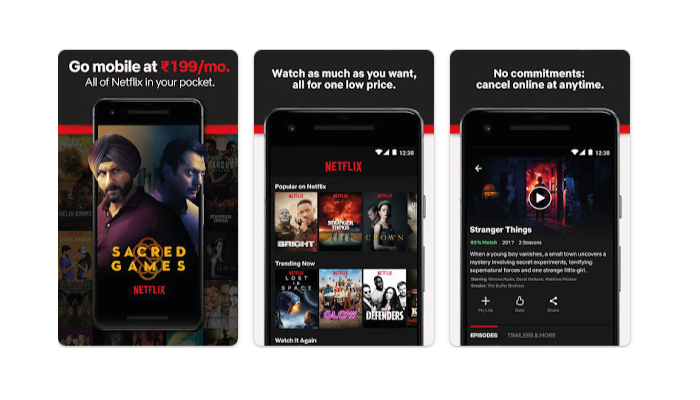
Netflix relies on a subscription-based model. Users pay a monthly fee to access a vast library of TV shows and movies without advertisements, generating revenue through subscriptions.
Tinder
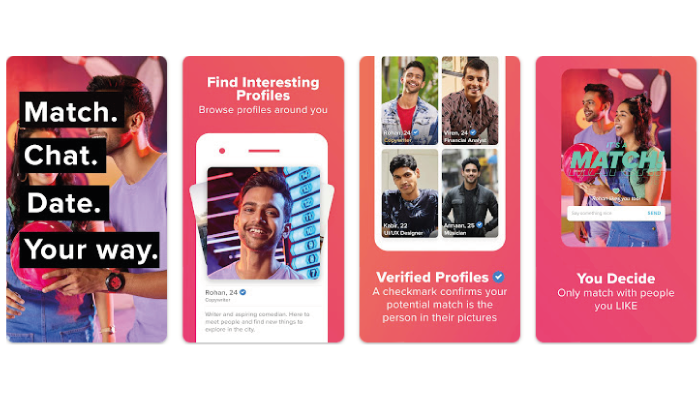
Tinder offers a freemium model with in-app purchases. Users can access basic features for free, but they can purchase premium subscriptions, such as Tinder Plus or Tinder Gold, for additional features like unlimited swipes or enhanced matching algorithms.
Uber

Uber generates revenue through its ride-hailing service by taking a commission from each ride fare. It connects drivers with passengers and facilitates transactions through the app.
Mobile App Monetization Strategies: Ways To Monetize An App
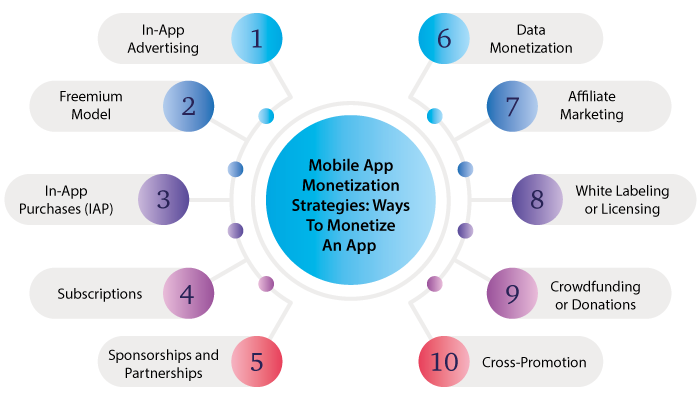
Did you know that there are different ways to monetize your app?
Well, there are a range of mobile app monetization strategies as we shall be discussing in this section of the blog.
Since there are different forms of mobile apps and not all of them can use the same method, knowing about different strategies comes in handy. Therefore, with this being said, let’s get right into it:
· In-App Advertising
Displaying ads within the app is a popular app monetization method. Businesses can integrate ad networks like Google AdMob or Facebook Audience Network to show targeted ads to users.
Moreover, Ad formats can include banners, interstitials, or native ads. Businesses earn revenue based on impressions or clicks.
· Freemium Model
This is a rather popular mobile app monetization strategy.
Offering a free version of the app with limited features or content, and providing an option for users to upgrade to a paid version or make in-app purchases for additional functionality or premium content.
This approach allows users to try the app before committing to a purchase.
· In-App Purchases (IAP)
Offering virtual goods, extra features, or premium content for purchase within the app.
Examples include unlocking additional levels in a game, buying virtual currency or items, or accessing exclusive content.
In addition, providing a seamless and enticing user experience is key to driving in-app purchases.
· Subscriptions
Implementing a subscription model where users pay a recurring fee (monthly, quarterly, or annually) to access premium features, exclusive content, or enhanced functionality.
As Such, subscriptions can offer different tiers or levels to cater to different user segments.
· Sponsorships and Partnerships
Collaborating with brands or businesses to sponsor or advertise within the app.
This can involve promoting sponsored content, integrating branded experiences, or offering exclusive deals or discounts to app users.
· Data Monetization
Aggregating and anonymizing user data (while adhering to privacy regulations) to provide insights or targeting capabilities to advertisers or third-party partners.
This strategy requires careful consideration of privacy and data protection.
· Affiliate Marketing
Partnering with affiliate programs or networks to promote products or services relevant to the app’s audience. Businesses earn a commission for each user who makes a purchase through their affiliate links.
· White Labeling or Licensing
Licensing the app’s technology, codebase, or features to other businesses or Businesses who can rebrand or customize it for their own purposes.
This strategy allows for additional revenue streams without relying solely on user engagement.
· Crowdfunding or Donations
Engaging with the app’s user community and offering opportunities for users to support the app through donations or crowdfunding platforms.
This approach is commonly used by open-source or community-driven projects.
· Cross-Promotion
Promoting other apps or products within your app or partnering with other Businesses to promote each other’s apps.
And this mobile app monetization strategy can help increase visibility and user acquisition for all parties involved.
So, these are the top mobile app monetization strategies. With this out of the way, let’s look at the ways to mobile monetization.
How To Monetize An App?
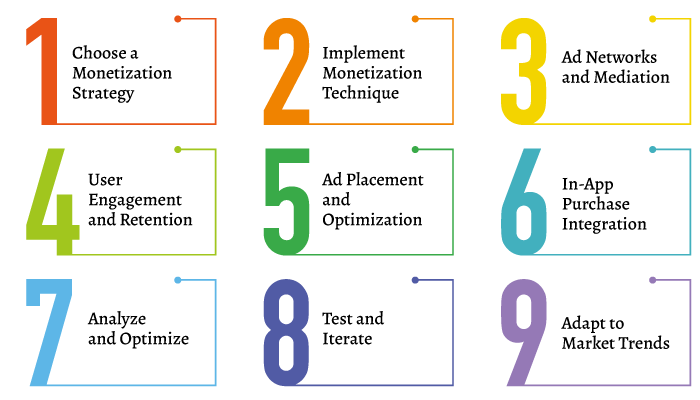
Want to make money with mobile app? We have got you covered.
Here, we will discuss the process of app monetization in detail. Therefore, with this being said, let’s get right into it.
1. Choose a Monetization Strategy
The first thing you need to do is select a monetization strategy based on their app’s nature, target audience, and business goals.
This could involve in-app advertising, in-app purchases, subscriptions, sponsorships, data monetization, or a combination of these methods.
2. Implement Monetization Technique
In the second step, you integrate the chosen app monetization techniques into their app.
This may involve incorporating ad networks or SDKs (Software Development Kits) for displaying ads, setting up in-app purchase systems, integrating subscription management systems, or implementing tracking and data collection mechanisms.
3. Ad Networks and Mediation
If the app monetization strategy involves in-app advertising, Businesses can partner with ad networks.
Ad networks connect Businesses with advertisers, delivering ads to the app’s users.
Then you should integrate ad mediation platforms that help manage multiple ad networks, optimize ad delivery, and maximize revenue by selecting the most suitable ads from different sources.
4. User Engagement and Retention
To generate meaningful revenue, you need to focus on user engagement and retention.
A high-quality user experience, regular updates, and responsive customer support contribute to user satisfaction.
And encourage users to spend more time within the app, increasing opportunities for app monetization.
5. Ad Placement and Optimization
For apps relying on advertising, you need to strategically place ads within the app. This can involve banners, interstitials, rewarded videos, or native ads.
By experimenting with different ad formats, placements, and frequency, Businesses can optimize ad performance, balancing revenue generation with user experience.
6. In-App Purchase Integration
Apps using in-app purchases or subscriptions need to integrate the necessary payment systems and create a seamless purchase flow within the app.
Moreover, this may involve connecting with app stores (such as Apple’s App Store or Google Play Store), implementing secure payment gateways, and ensuring a straightforward process for users to make purchases.
7. Analyze and Optimize
Businesses continually analyze app metrics and user behavior to optimize their monetization strategies.
And, you should use analytics tools to track user engagement, ad performance, conversion rates, and other relevant data.
By analyzing this data, your developers can identify areas for improvement, refine monetization techniques, and enhance revenue generation.
8. Test and Iterate
App monetization is an iterative process.
Therefore, App development companies often run A/B tests and experiment with different monetization approaches to find the most effective strategies for their app.
This involves testing different ad formats, pricing models, subscription tiers, or promotional offers to maximize revenue while maintaining a positive user experience.
9. Adapt to Market Trends
Lastly, the team needs to stay updated with evolving market trends and user preferences.
They should be aware of new monetization opportunities, changes in advertising regulations, emerging technologies, or shifts in user behavior to adapt their monetization strategies accordingly.
And with this, you have monetized your mobile app. It’s time to make money!
However, it’s easy to get things wrong, therefore, let’s discuss some of the best practices to follow in the next section.
App Monetization Best Practices
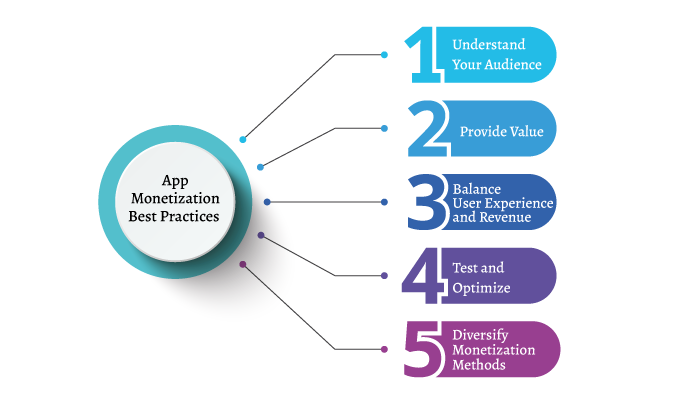
Here we shall be discussing some of the best app monetization best practices that will help you avoid common mistakes and get the most out of strategies.
Moving on, these are, as mentioned below:
· Understand Your Audience
The first thing you should do is, gain a deep understanding of your target audience, their preferences, and behaviors.
This knowledge will help you choose the most effective app monetization strategies and tailor your app’s monetization approach accordingly.
· Provide Value
It goes without saying that you should focus on delivering a high-quality app experience that provides genuine value to users.
Engage and retain users by offering useful features, relevant content, and a seamless user interface.
A satisfied user base is more likely to engage with ads, make in-app purchases, or subscribe to premium services.
· Balance User Experience and Revenue
As a business or as a team of developers, one should always strive for a balance between generating revenue and maintaining a positive user experience.
Intrusive or excessive advertising can drive users away, so carefully consider ad placement, frequency, and relevance.
Ensure that in-app purchases or subscription options offer clear value without hindering the core functionality of the app.
· Test and Optimize
Continuously test and optimize your monetization strategies. Run A/B tests to compare different ad formats, pricing models, or subscription tiers.
And analyze user data and app metrics to identify areas for improvement and make data-driven decisions to maximize revenue.
· Diversify Monetization Methods
You should consider implementing multiple monetization methods to increase your revenue streams.
For instance, you can combine in-app advertising with in-app purchases or subscriptions to cater to different user preferences and capture various revenue opportunities.
Conclusion
App monetization can help app based businesses make a lot of money even if they aren’t product or service based. In this blog, we discussed all you need to know about the same. And with this being said, we conclude the blog.
FAQ
App monetization refers to the process of generating revenue from mobile applications. It involves implementing strategies to earn money, such as in-app purchases, advertisements, subscriptions, or selling the app itself.
Popular app monetization models include in-app purchases, freemium (free app with premium features), advertising (in-app ads or rewarded videos), subscriptions, and selling the app outright.
Consider your target audience, app category, and value proposition. Analyze market trends and competitors’ strategies. Experiment with different models, and gather user feedback to determine which monetization approach aligns best with your app’s goals.
Offering your app for free initially (freemium model) can attract more users, increasing the potential for monetization through in-app purchases or ads. Charging upfront can provide immediate revenue but may limit user adoption.
In-app purchases are items, features, or content that users can buy within an app. They allow users to enhance their experience or unlock additional functionality. Users make purchases using real money or virtual currencies provided by the app.
Yes, ads can be an effective monetization method if implemented thoughtfully. Choose appropriate ad formats, frequency, and placements to ensure a positive user experience. Balancing user engagement and revenue generation is crucial.
User engagement directly impacts app monetization. Highly engaged users are more likely to make in-app purchases, view and interact with ads, and subscribe to premium services. Focus on delivering value, retaining users, and optimizing the user experience.
Yes, subscriptions are a popular monetization model, particularly for content-based apps or services. Offer compelling subscription plans with exclusive content or features. Continuously provide value to subscribers to retain their loyalty.
Strive for a balance between revenue generation and user experience. Minimize disruptive ads, provide meaningful rewards, offer optional purchases, and regularly gather user feedback to iterate and improve your monetization strategy.
Absolutely. Familiarize yourself with relevant laws and regulations, such as data privacy, advertising guidelines, and app store policies. Ensure compliance to avoid penalties and maintain a trustworthy reputation.
Utilize app analytics tools to track key metrics like revenue, user engagement, in-app purchases, ad impressions, and conversion rates. Analyze the data to identify trends, optimize monetization strategies, and make informed business decisions.





No Comments
Comments are closed.